Marc and Bella Chagall found a safe haven in New York when the National Socialists made life in Europe impossible for them. But what did the Chagalls' New York look like and where did they stay? A search for traces in two parts.
The day Marc Chagall and his wife Bella set foot on New York soil was the day Germany invaded Russia (June 21, 1941). The couple held out in France for the longest time, but finally got out with the help of Alfred H. Barr, Jr., the very first director of the Museum of Modern Art (MoMA), and Varian Fry, a journalist who founded the Emergency Rescue Committee that helped over 3000 Jewish refugees escape Nazi Germany and the Holocaust.
When it became apparent that Europe and especially Paris was no longer save for Jewish artists, Barr and his wife in New York put together a list, including Marc Chagall, Max Ernst, and others, the MoMA wanted to exhibit and therefore the US could issue American visas to. Fry flew to Marseille with this list and 200 visas in his pocket. Due to mounting antisemitism, Chagall already had left Paris for the French countryside, when he was arrested in Marseille and only due to Fry’s intervention of threatening an international scandal by calling the New York Times he was released.
The very next days they left Marseille for Lisbon where they boarded a ship, the SS Pinto Basto that sailed for New York in mid-June. Marc and Bella had to leave their daughter Ida and her husband behind, not knowing if they would see them or Europe ever again.
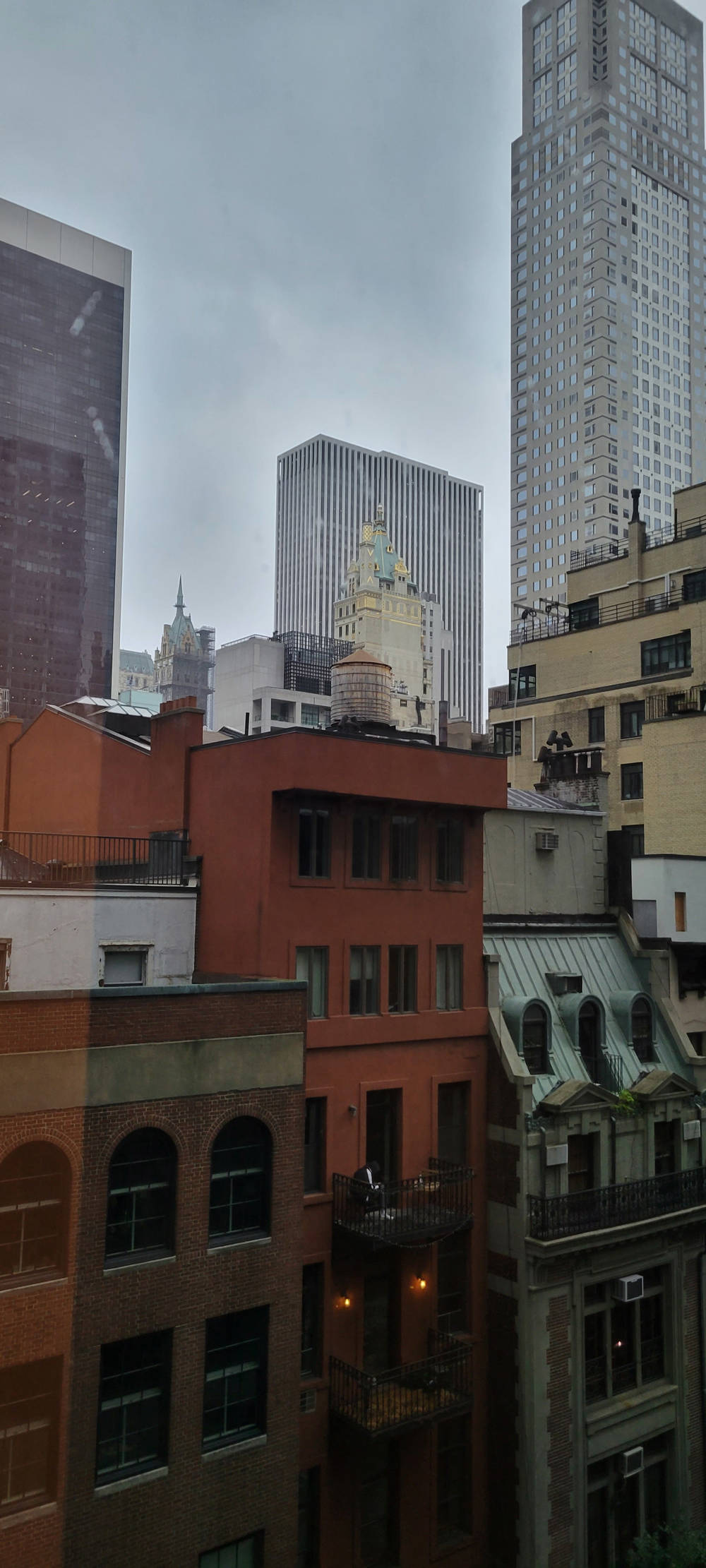
A childhood memory at the MoMa
It's an exceptionally rainy day in New York. Hurricane Ian finally made its way up the coast from Florida, when I rush through the morning traffic on 6th Avenue on my way to the MoMA. I’m in New York to follow Marc Chagall’s footsteps through the city during his time in New York from 1941 to 1948. As expected, the museum is crowded with tourists and New Yorkers alike fleeing the wet weather to spend the morning contemplating art. MoMA owns 215 works of Marc Chagall, including drawing, sketches, costume designs, and paintings, but only one is currently on view at the museum. Everyone who has ever been to MoMA knows that the galleries for art from the late 20th and early 21st century are the most visited ones. It’s like going to see the Mona Lisa at the Louvre.
So, it takes a little while to make my way up the escalators wandering through the galleries until I finally find “I and the Village “(1911) hanging on a clean white wall in the Alfred H. Barr, Jr. Galleries – how fitting, don’t you think? Painted in Paris a year after he left Vitebsk, the small village in today’s Belarus where he was born, the painting is a reminiscence on his childhood memories. With animals and people occupying the same space, it’s in the typical bright, folkloristic style Chagall has been known for, so different from the paintings he painted 30 years later after another move, this time a forced one, from France to the US. New York never got to be his home, he never learned English or was willing to integrate into American life, longing for Paris and Europe all the way through his seven-year exile.
From refugee shelter to Pradastore
From Midtown I take the subway uptown to the Upper East Side (UES) and visit Hampton House. Once a drop-down space for refugees from Europe, today it is a luxury condo building housing Prada’s New York Mansion on the ground floor. The limestone-colored bricks and simple black mental window frames are unassuming and typical for some of the side streets in this area on the UES, unlike the impressive buildings on Park and Madison Aves just around the corner. When Marc and Bella arrived in New York, they temporarily stayed at Hampton House while fervently awaiting Ida and Michel’s arrival in the US. Ida and her husband had managed to get on one of the last ships sailing for the US the SS Navemar, originally a cargo ship that was repurposed to transport over 1000 European refugees.
Conditions were terrible, typhus broke out and they were short on food and water from day one. Ida made it her mission to protect her father’s work – two massive crates they were traveling with – from water, passengers, and other threats day and night by sitting on top of them. When they arrived in New York she was very sick, but Chagall’s paintings arrived safe and intact, unlike a lot of other crates that got soaked in the lower levels of the ship. It was the last voyage of the SS Navemar, on the way back to Europe it was torpedoed by the Nazis and sank in the strait of Gibraltar.
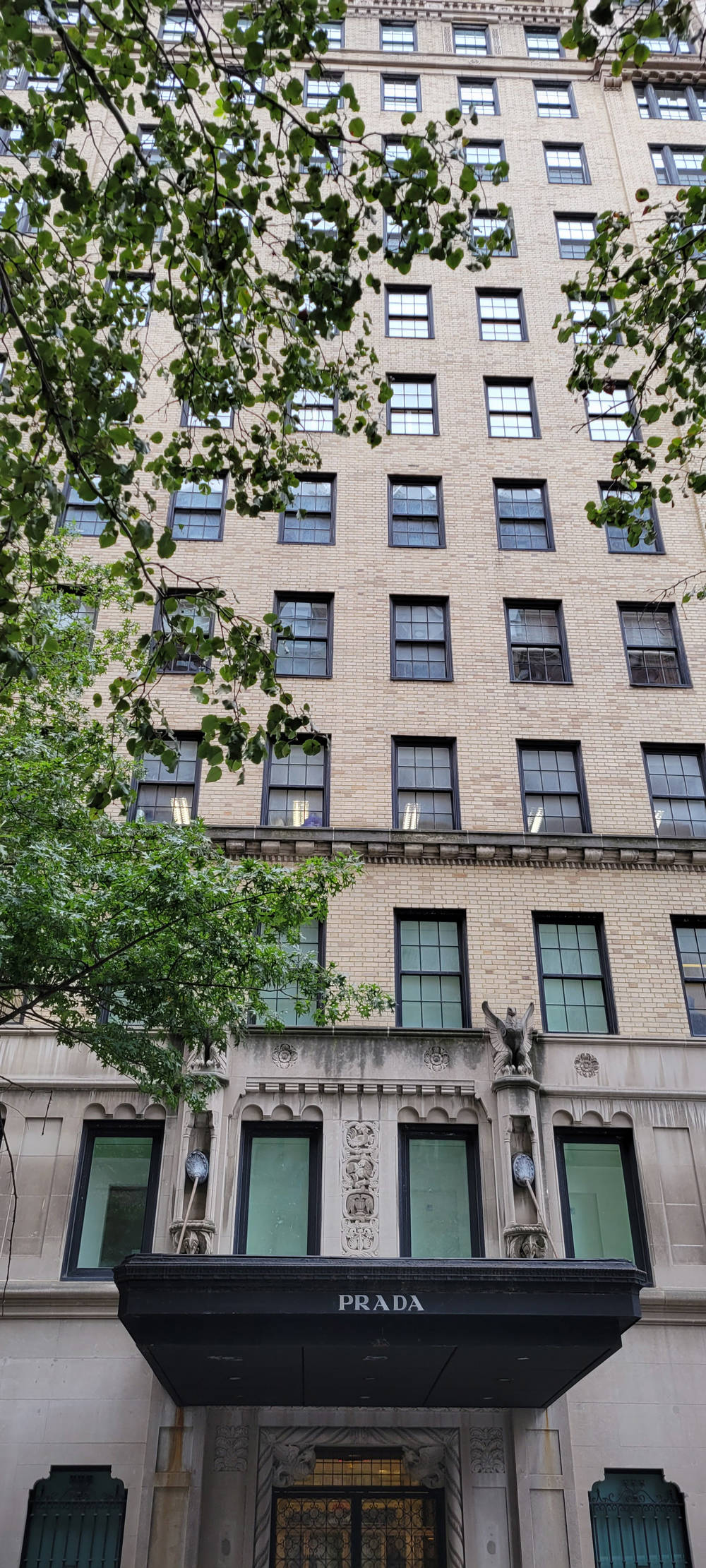
Life in New York wasn’t easy for the Chagall’s. Even though they were grateful to escape the horrors in Europe – grateful but unhappy – the forced exile weighed heavy on them, and they longed for Paris and home. Chagall’s color palette changes during this time, grows darker, the themes in his paintings stir more and more into the direction of identity, homeland, and exile. And then the impossible, the unspeakable happens: Bella, Chagall’s wife and long-time muse, his connection to the old world of Vitebsk and Russia suddenly dies in September of 1944.
“The best kept secret in New York City“
It's one of the first cold October mornings, when I arrive at the Riverside Memorial Chapel on the Upper West Side (UWS) where Bella Chagall’s funeral service was held. The building is clad in construction scaffolding and I almost walk past the front entrance. After entering, I realize my mistake immediately: this is not a public chapel as I expected, but a funeral home. Still, I try one of the offices closest to me and I am in luck: A very friendly face agrees to show me the building (in case I have a loved one to bury soon). “What chapel would you like to see?” she asks and then adds: “The Gothic chapel is our biggest space.” We step into an old brass, hand-operated(!) elevator, going up one level and from there up another flight of stairs, laid out with thick carpet absorbing the sound. We walk by a small office illuminated by a desk lamp only furnished with a buttery-yellow leather chair and a mahogany secretary – the only window is still blocked by an A/C. “This is where the Rabbi gets ready,” she tells me. After crossing through the hall, she pushes open a wooden door and we step into something like a dream. “I call it the best kept secret in New York City,” she smiles. And it truly is.
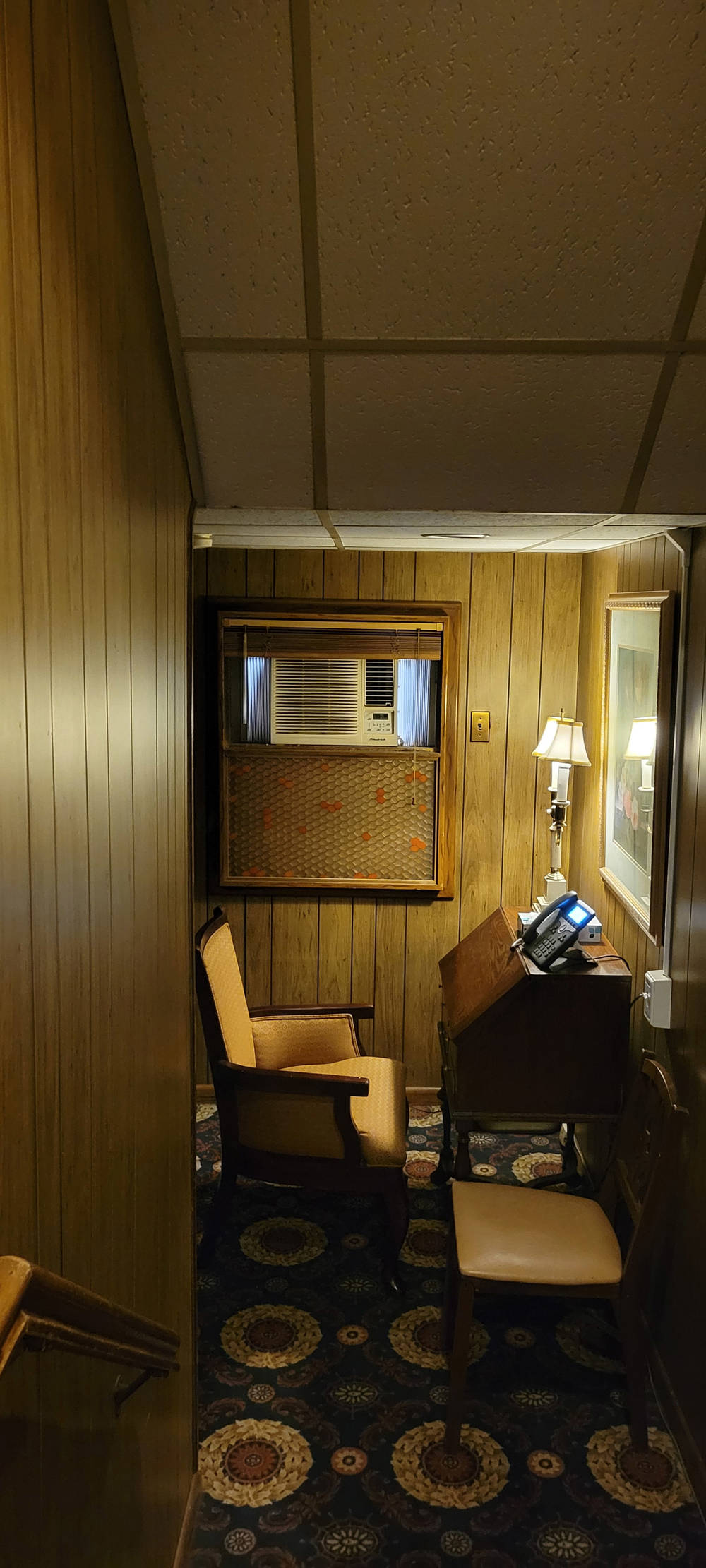
In the middle of the UWS there is a chapel with celestial arched ceilings, two stories high, painted like the night sky in pale blue with golden stars. Stained glass windows and wall murals depict classical Jewish themes, and the chapel actually seats over 350 people. While I’m trying to catch my breath, she is using a wall telephone to call for help to switch on the art-deco inspired chandeliers hanging from each of the three domes of the ceiling. Just a minute later the room is glowing softly.
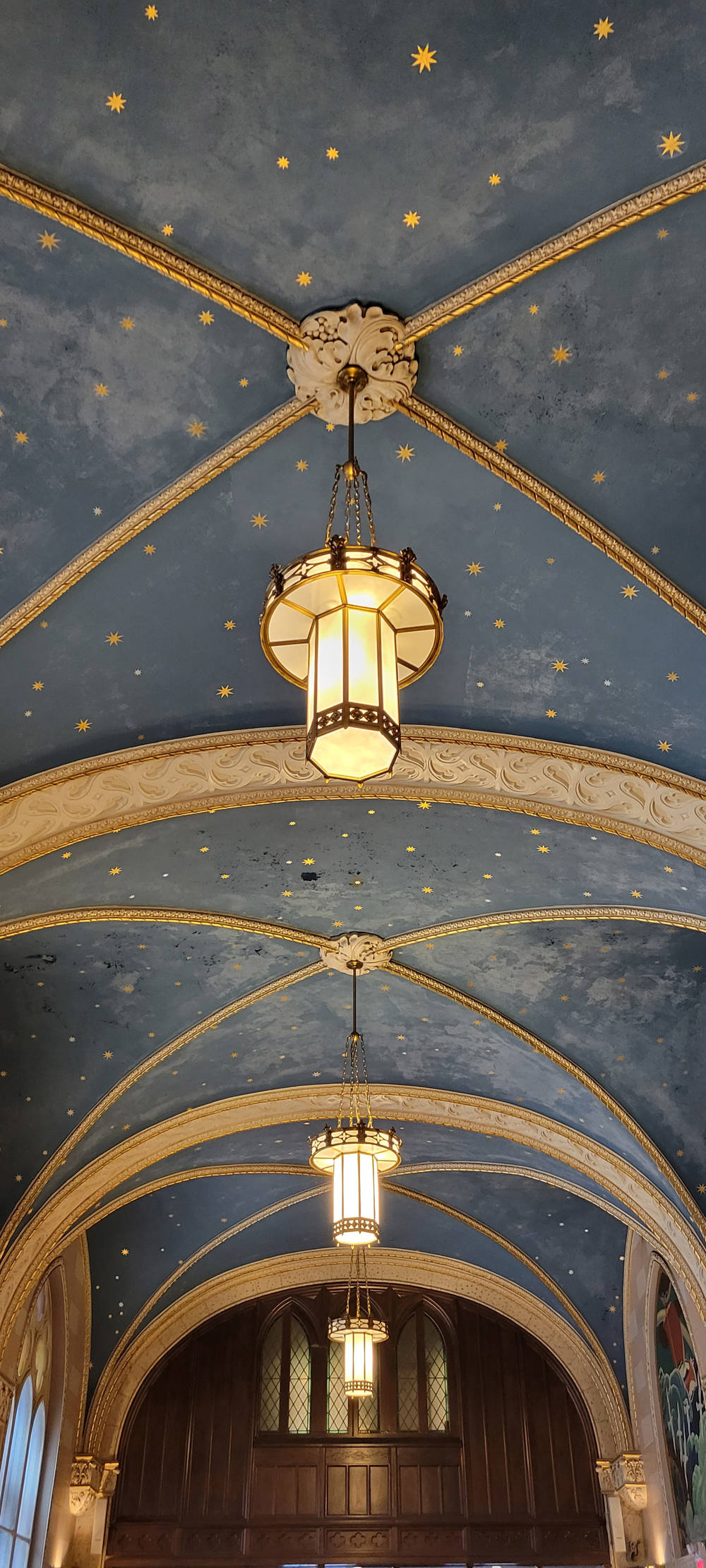
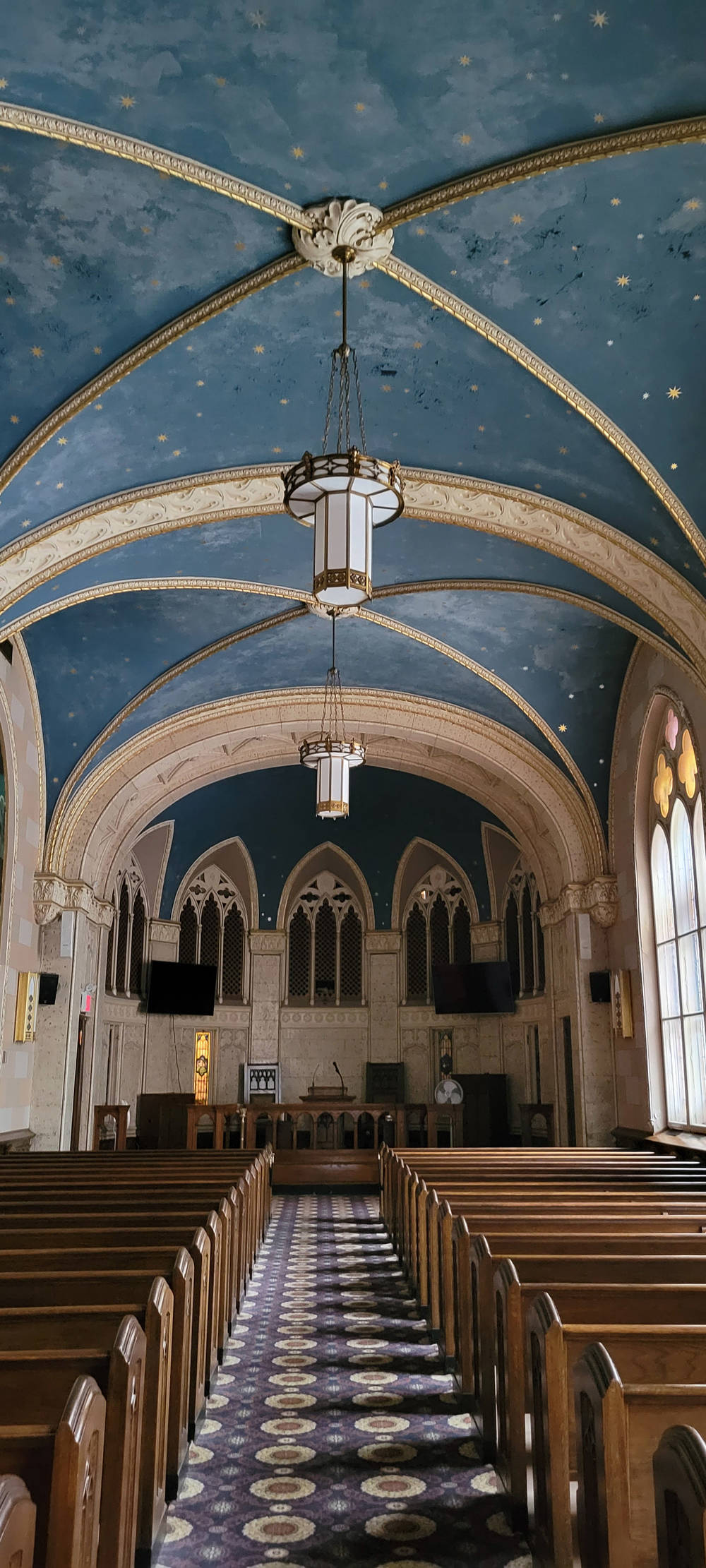
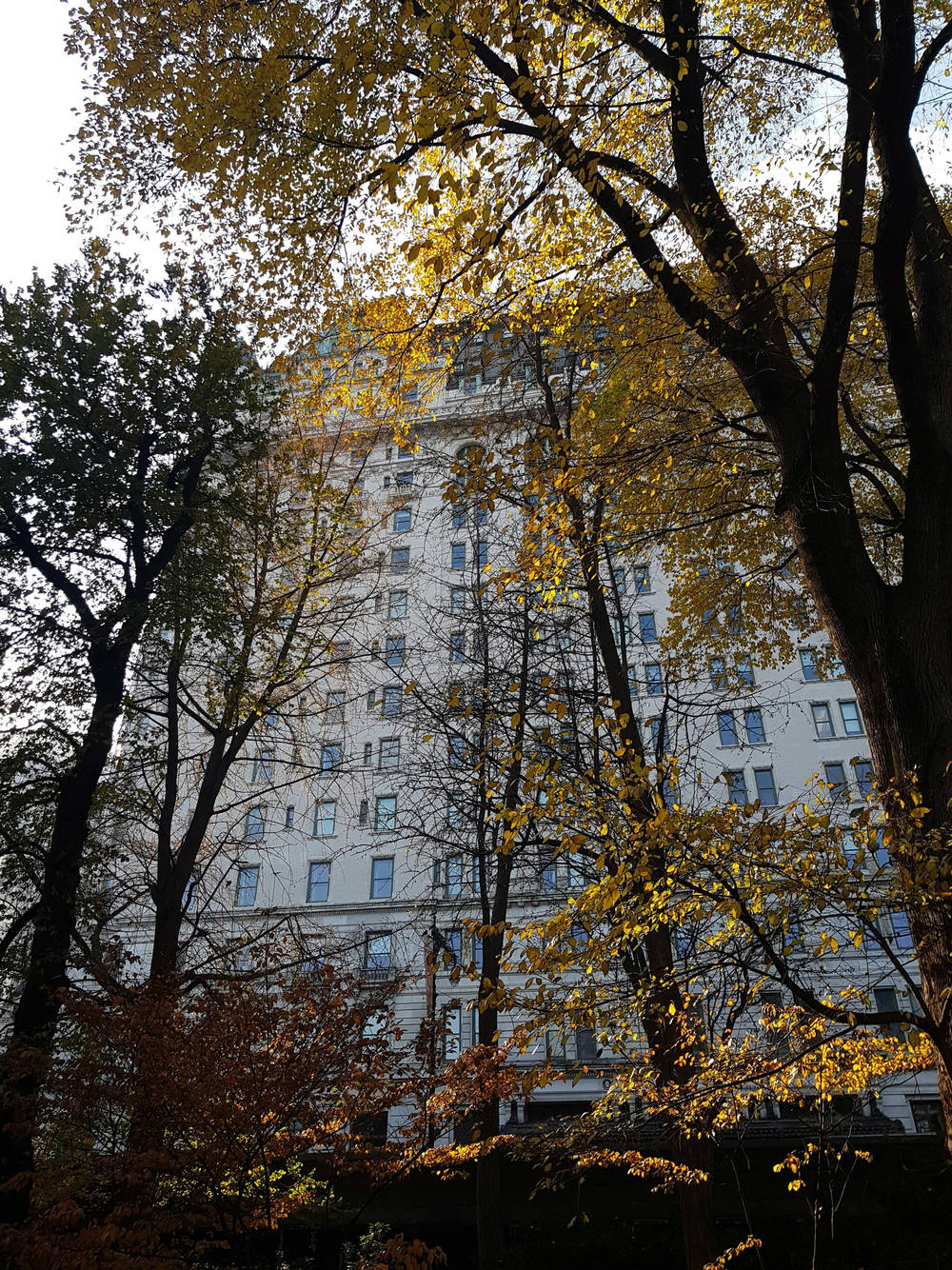
I leave the chapel through the side entrance and walk towards Central Park West. I turn into 68th Street to sneak a peek into the Stephen Wise Free Synagogue where the Chagall family held Bella’s Kaddish, a Jewish prayer held during the mourning period after the death of a loved one. The synagogue is closed, it is a Friday morning after all, and wrapped in construction tarp as well. The wind picked up again and I pull my scarf a little closer, turn around, and walk back to Central Park. The leaves are starting to turn yellow, orange, and some already red. I stroll towards the south-east corner of the park until I see the Plaza Hotel rise above the trees, thinking of Marc and Bella who spend a few nights in the majestic old dame after their arrival in New York. And even though they weren’t fond of the city that never sleeps, I can’t think of a better place to rest your troubled mind even if just for a little while.









